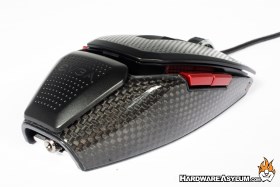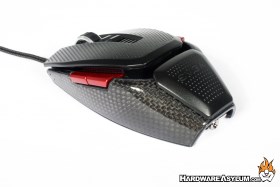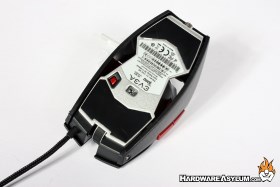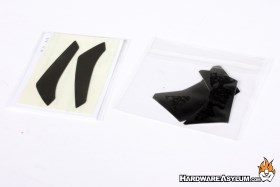EVGA TORQ X10 Carbon Gaming Mouse Review
Author: Darren McCainTorq X10 Carbon Layout and Features
One thing is for sure. The X10 Carbon has a unique look to it. The two top surfaces are actually still textured plastic but complement the carbon fiber nicely. The wheel and the gap between the surfaces will also light up and can be programmed to match your mood. The back surface is further enhanced with a light up matching EVGA logo.
Mirror mirror… The X10 design is ambidextrous as seen here. Left handers of the gaming world rejoice! Both sets of buttons can be programmed separately or turned off if you habitually only use one side for buttons. The buttons are almost flush with the body leading me to rely on the seam to tell which button I am pushing with my thumb. In the heat of the action I often found I was reloading (the back button) when I meant to knife with the front button. The result was an untimely death more often than I would like, doh!
No such issues with the main buttons. The main buttons are constructed of Omron switches that are quite responsive and rated to a 20 million click lifecycle. That is mechanical keyboard type durability!
Thanks to a rather extended session of Battlefield 4 I adjusted to hitting the thumb buttons with an upward slide along the body rather than a direct push. The motion comes pretty naturally but leads to resting my thumb on the mouse pad. A solid claw grip would not notice the issue but I found myself wishing the X10 was slightly larger or flared out under the side to rest on.
The bottom of the X10 is constructed of a solid aluminum plate with two oversize Polytetrafluoroethylene (PTFE) feet. PTFE or, more commonly, Teflon feet are included as well along with a set of anti-slip grip tape for the sides. It’s a crime to cover up the carbon fiber right? True but the polished sides are really smooth and can get slick if you are the type that sweats during a stressful session fragging your friends.
At the core of the X10 we find the latest Avago 9800 laser sensor providing up to 8200DPI with 1000Hz polling rate. The DPI can be set as low as 200 DPI and programmed to 5 separate sensitivity levels that can be selected on the fly. I found 5200 to be about right for gaming and 3000 for normal work.
The mysterious button you see in the center is for on the fly color control. That’s right, you can pick up your X10 and change the color theme without touching the software suite. It really does make me think I should be pushing to sync, lol.





